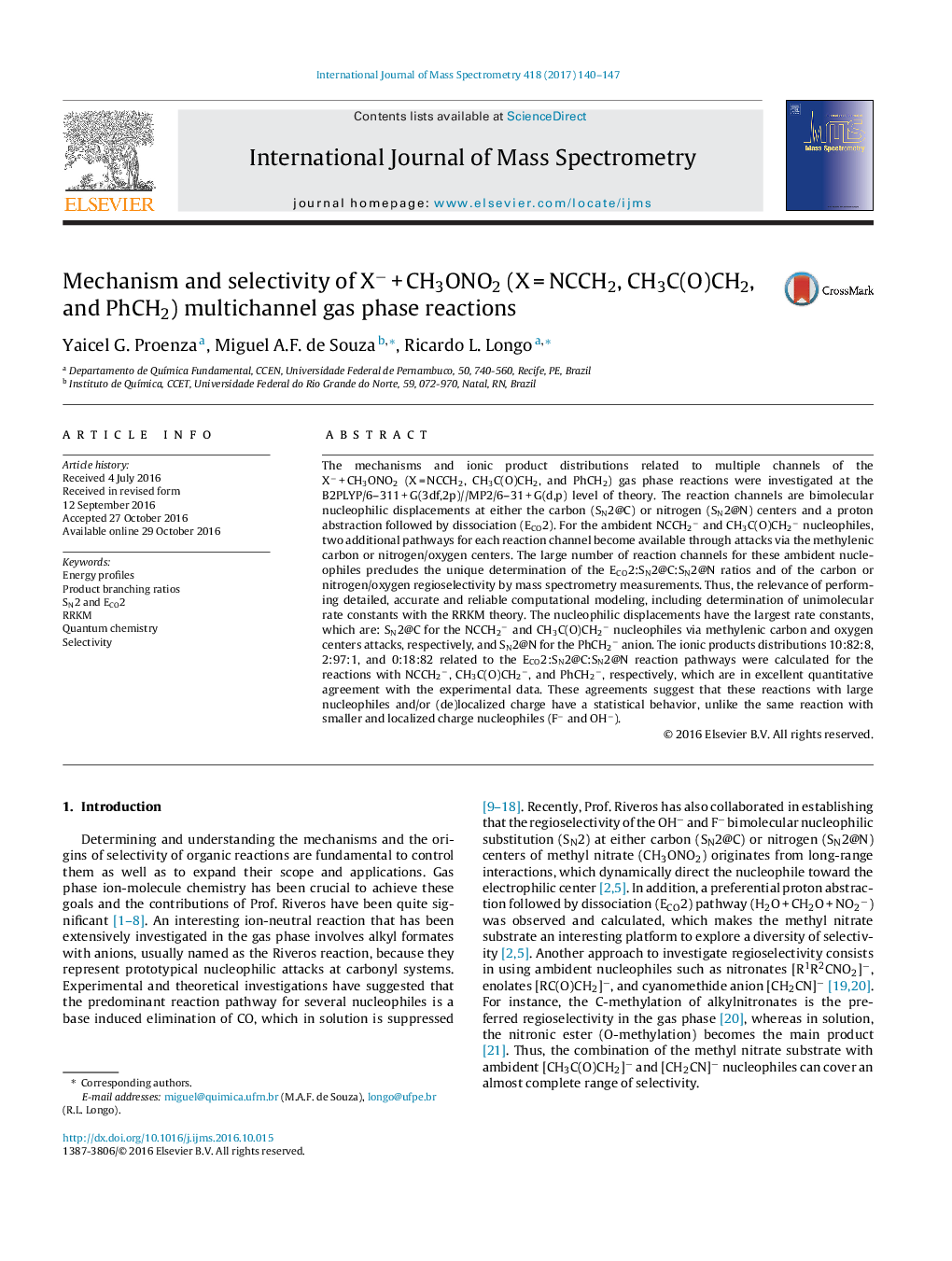| Article ID | Journal | Published Year | Pages | File Type |
|---|---|---|---|---|
| 5134227 | International Journal of Mass Spectrometry | 2017 | 8 Pages |
â¢Exploring reaction mechanisms and selectivity with quantum chemistry.â¢Statistical and nonstatistical behavior of ion-molecule gas phase reactions.â¢Size effects and charge (de)localization of nucleophiles on chemical selectivity.â¢SN2@C, SN2@N, and ECO2 mechanisms.
The mechanisms and ionic product distributions related to multiple channels of the Xâ + CH3ONO2 (X = NCCH2, CH3C(O)CH2, and PhCH2) gas phase reactions were investigated at the B2PLYP/6-311 + G(3df,2p)//MP2/6-31 + G(d,p) level of theory. The reaction channels are bimolecular nucleophilic displacements at either the carbon (SN2@C) or nitrogen (SN2@N) centers and a proton abstraction followed by dissociation (ECO2). For the ambident NCCH2â and CH3C(O)CH2â nucleophiles, two additional pathways for each reaction channel become available through attacks via the methylenic carbon or nitrogen/oxygen centers. The large number of reaction channels for these ambident nucleophiles precludes the unique determination of the ECO2:SN2@C:SN2@N ratios and of the carbon or nitrogen/oxygen regioselectivity by mass spectrometry measurements. Thus, the relevance of performing detailed, accurate and reliable computational modeling, including determination of unimolecular rate constants with the RRKM theory. The nucleophilic displacements have the largest rate constants, which are: SN2@C for the NCCH2â and CH3C(O)CH2â nucleophiles via methylenic carbon and oxygen centers attacks, respectively, and SN2@N for the PhCH2â anion. The ionic products distributions 10:82:8, 2:97:1, and 0:18:82 related to the ECO2:SN2@C:SN2@N reaction pathways were calculated for the reactions with NCCH2â, CH3C(O)CH2â, and PhCH2â, respectively, which are in excellent quantitative agreement with the experimental data. These agreements suggest that these reactions with large nucleophiles and/or (de)localized charge have a statistical behavior, unlike the same reaction with smaller and localized charge nucleophiles (Fâ and OHâ).
Graphical abstractDownload high-res image (229KB)Download full-size image
